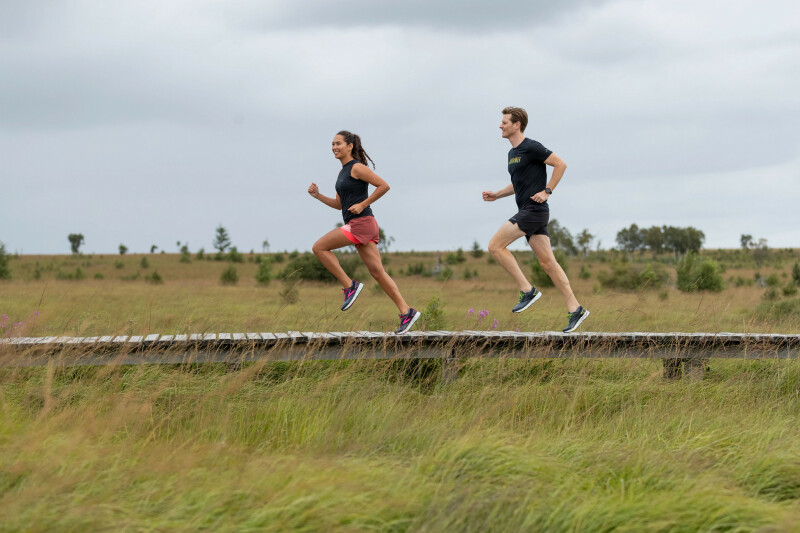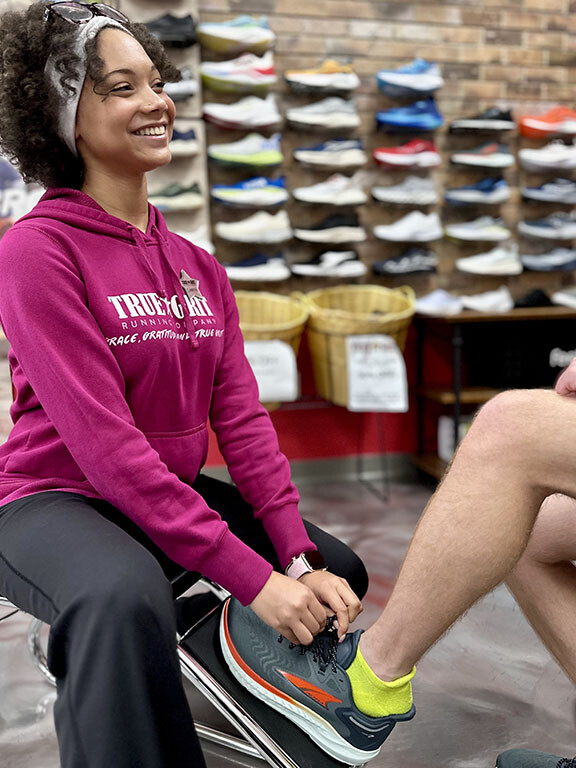Using a long-term, science-backed approach to sustainability that will greatly reduce its environmental impact without compromising product performance is the objective of eco-efforts at Brooks Running. That commitment will be on display this month when the company announces its ambitious 10-year roadmap for sustainability that will encompass circular product as well as carbon neutral initiatives.
Its sustainability work is focused in two key areas: reducing its carbon emissions across its entire business with a commitment to becoming carbon neutral by 2040; and decreasing its reliance on non-renewable resources by incorporating more sustainable materials into its products and reducing the material waste generated during product manufacturing.
On the supply chain side, responsible sourcing is a priority and the company has instituted a Supplier Code of Conduct that sets standards for environmental and key human rights issues, including health and safety. Regarding product, the brand’s sustainability program aims to reduce environmental impact through a focus on materials, waste and chemicals.
Part of this process calls for empowering designers to make smarter decisions in the development process Ð such as by using information gleaned from tracking pattern efficiency for each part of a shoe’s upper Ð that will reduce a product’s footprint. Brooks also seeks to reduce its carbon footprint and part of this process entails prioritizing ocean shipments over air shipments.
At present, the company is focused on converting polyester to recycled polyester. “This conversion is being applied across the majority of our footwear and apparel product,” explains David Kemp, senior manager of corporate responsibility at Brooks Running. For example, Brooks’ Spring 2021 footwear styles have all converted the majority of the different reinforcement textiles to 100 percent recycled polyester and many include an upper textile with a minimum 30 percent recycled content.
“The percentage of our footwear and apparel that is made from more sustainable materials is expected to increase in future seasons,” Kemp adds. Brooks previously announced that it aims to use only recycled polyester by 2023 and that 100 percent of leather is sourced from Leather Working Group Gold-Certified tanneries.
Kemp believes that one of the biggest challenges of designing and producing sustainable products is to maintain performance.
“Delivering a top-quality fit, feel and ride is the Brooks promise, so we’re focused on decreasing our environmental impact while maintaining Ð or improving Ð the performance benefits for the runner,” he says. Although using more sustainable materials or manufacturing processes can cost more financially, the company is hoping to see that price difference decrease as sustainability efforts become more mainstream. Brooks is also offsetting the cost through its other sustainability efforts that lead to cost savings.
On the retail front, “We’re constantly hearing from specialty retailers that runners coming in to shop are seeking out products with a sustainable component, whether it be how the product is made, a give-back component, or something in between,” Kemp reports. “Sustainability is a global priority for Brooks. This expands beyond just the runners [for whom] we create product, but also leans into our employee base across the globe as well as our supply chain.”






